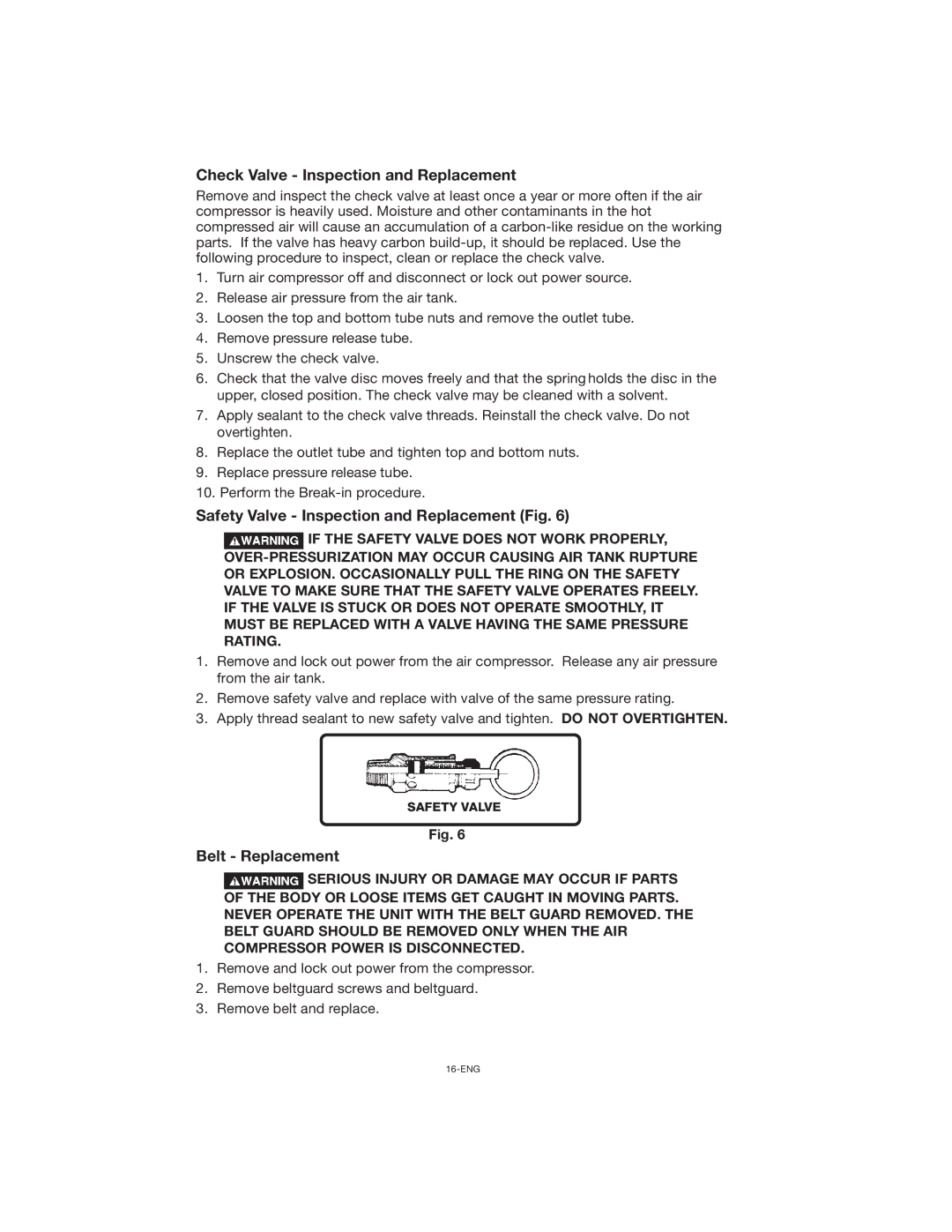
Check Valve - Inspection and Replacement
Remove and inspect the check valve at least once a year or more often if the air compressor is heavily used. Moisture and other contaminants in the hot compressed air will cause an accumulation of a
1.Turn air compressor off and disconnect or lock out power source.
2.Release air pressure from the air tank.
3.Loosen the top and bottom tube nuts and remove the outlet tube.
4.Remove pressure release tube.
5.Unscrew the check valve.
6.Check that the valve disc moves freely and that the spring holds the disc in the upper, closed position. The check valve may be cleaned with a solvent.
7.Apply sealant to the check valve threads. Reinstall the check valve. Do not overtighten.
8.Replace the outlet tube and tighten top and bottom nuts.
9.Replace pressure release tube.
10.Perform the
Safety Valve - Inspection and Replacement (Fig. 6)
![]() IF THE SAFETY VALVE DOES NOT WORK PROPERLY,
IF THE SAFETY VALVE DOES NOT WORK PROPERLY,
1.Remove and lock out power from the air compressor. Release any air pressure from the air tank.
2.Remove safety valve and replace with valve of the same pressure rating.
3.Apply thread sealant to new safety valve and tighten. DO NOT OVERTIGHTEN.
SAFETY VALVE
Fig. 6
Belt - Replacement
![]() SERIOUS INJURY OR DAMAGE MAY OCCUR IF PARTS OF THE BODY OR LOOSE ITEMS GET CAUGHT IN MOVING PARTS. NEVER OPERATE THE UNIT WITH THE BELT GUARD REMOVED. THE BELT GUARD SHOULD BE REMOVED ONLY WHEN THE AIR COMPRESSOR POWER IS DISCONNECTED.
SERIOUS INJURY OR DAMAGE MAY OCCUR IF PARTS OF THE BODY OR LOOSE ITEMS GET CAUGHT IN MOVING PARTS. NEVER OPERATE THE UNIT WITH THE BELT GUARD REMOVED. THE BELT GUARD SHOULD BE REMOVED ONLY WHEN THE AIR COMPRESSOR POWER IS DISCONNECTED.
1.Remove and lock out power from the compressor.
2.Remove beltguard screws and beltguard.
3.Remove belt and replace.
